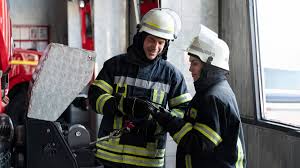
DIPLOMA IN FIRE ENGINEERING AND SAFETY MANAGEMENT (2 YEAR)
🎓 DIPLOMA IN FIRE ENGINEERING & SAFETY MANAGEMENT (2-YEAR)
📚 YEAR 1: FOUNDATIONS OF FIRE ENGINEERING & SAFETY
1. History of Fire Engineering & Safety
- Ancient fire fighting techniques
- Evolution of fire services globally and locally
- Major historical fire disasters (e.g., London Fire 1666, Bhopal Gas Tragedy)
- Development of fire codes and legislation
- Emergence of modern fire engineering concepts
2. Basics of Fire Science
- Nature and chemistry of fire
- Fire triangle & tetrahedron
- Heat transfer methods
- Classification of fires (A, B, C, D, K)
- Fire behavior in different environments
3. Introduction to Safety Management
- Definition and scope of safety management
- Hazard identification and risk assessment (HIRA)
- Principles of accident prevention
- Job safety analysis (JSA)
4. Fire Prevention and Control Techniques
- Fire risk assessment
- Fire load and fire safety design
- Fire doors, dampers, and fireproof materials
- Compartmentalization and smoke control
5. Fire Protection Systems
- Portable extinguishers (types and usage)
- Sprinkler and hydrant systems
- Fire detection and alarm systems
- Fixed foam, CO₂ and clean agent systems
6. First Aid and Emergency Procedures
- Basic first aid for fire injuries
- CPR and trauma care
- Evacuation procedures and emergency exits
- Handling crowd panic in emergencies
7. Practical Training
- Fire drill exercises
- Use of breathing apparatus
- Hose handling and knot tying
- Familiarization with fire station equipment
📘 YEAR 2: ADVANCED FIRE ENGINEERING & SAFETY PRACTICES
1. Industrial Fire Safety
- Fire safety in oil & gas, chemical, and manufacturing industries
- Electrical fire safety
- Safety in storage of flammable substances
- Fire watch and permit to work systems
2. Fire Protection Design & Engineering
- Fire detection system design
- Hydraulic calculations for sprinkler systems
- Passive vs active fire protection
- Layout planning for fire safety
3. Occupational Health and Safety (OHS)
- Safety acts and legislation (e.g., OSHA, Factories Act)
- Ergonomics and workplace safety
- Noise, radiation, and chemical hazard control
- Safety audits and inspections
4. Disaster Management
- Types of disasters (natural and industrial)
- Role of fire services in disaster response
- Emergency operation center (EOC) setup
- Contingency planning and drills
5. Rescue Techniques & Incident Command
- High-rise rescue and confined space entry
- Incident Command System (ICS)
- Ladder drills and stretcher handling
- Communication in emergencies
6. Legislation and Safety Codes
- National Building Code (NBC)
- NFPA, ISO fire safety standards
- Local fire department compliance and inspection protocols
7. Internship / Project Report
- 30–45 day industrial attachment or fire station training
- Project on fire risk assessment or mock drill execution
- Viva and final assessment

